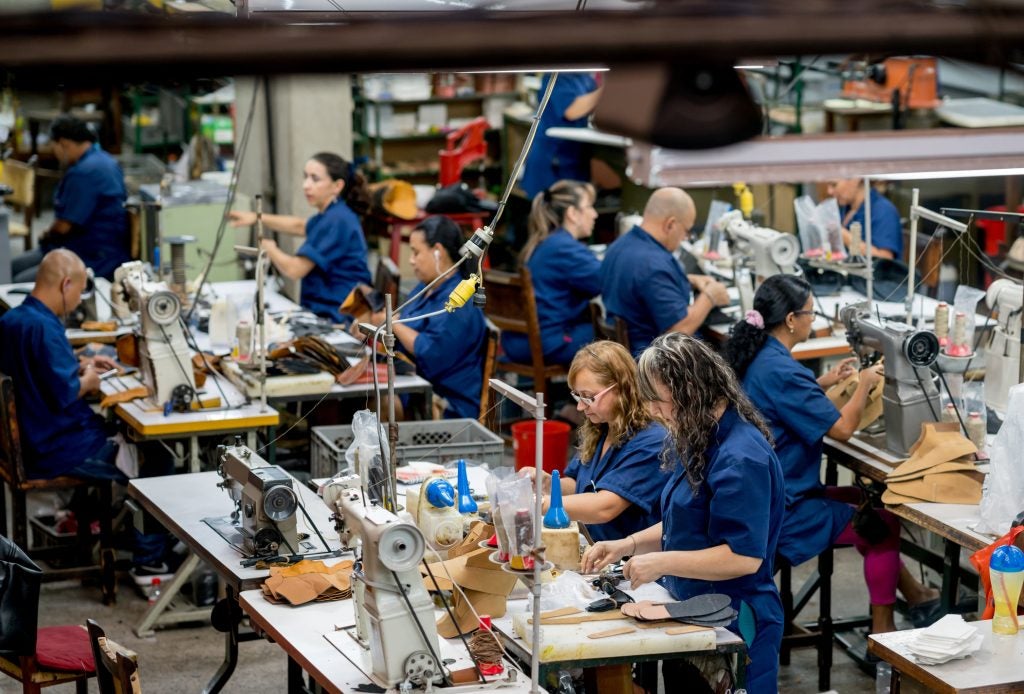The research reports point out that extreme heat and flooding are threatening key apparel hubs and will put over $65bn worth of export earnings at risk across four key production centres by 2030.
Researchers looked at the climate-vulnerable apparel industries in Bangladesh, Cambodia, Pakistan and Vietnam, which collectively represent 18% of global apparel exports, house approximately 10,000 apparel and footwear factories and employ 10.6m workers.
Researchers analysed future heat and flooding levels for these four countries in order to estimate industry-level outcomes for 2030 and 2050 under ‘climate adaptive’ and ‘high heat and flooding’ scenarios.
Finally, the team estimated physical climate risks and costs for six leading apparel brands and calculated possible return on investment for climate adaptation measures.
Fashion industry's exposure to physical climate risk
GLI and Schroders explain the aim of its two reports is, first, to understand the industry’s exposure to climate risks and the costs of climate adaptation for workers, manufacturers, buyers and investors, and governments.
And, second, to inspire industry actors to formulate adaptation strategies that are large-scale and fit for purpose.
For this purpose, the companies have compared estimates for future temperatures and flooding in 30 apparel production centres around the world and at the same time looked closely at the impacts on apparel workers in four countries: Bangladesh, Cambodia, Pakistan and Vietnam.
The reports further compare laws and regulations about heat, sick leave, and social protections in these four countries.
In addition to this, it suggests changes that unions, employers, governments, apparel buyers and investors should make now to protect workers and apparel manufacturing from high heat and intense floods.
Key recommendations
- Treat heat and flood events as health hazards with paid leave for events and related illnesses, and provide the right to stop work. Alter work hours, effort levels, rest and hydration based on indoor wet-bulb temperature standards.
- Develop social protection mechanisms and climate adaptation finance that redistributes costs and risks away from apparel workers.
- Brands, employees and unions can establish binding agreements and foster formal partnerships between brands, manufacturers, unions, and governments to address and adapt to climate breakdown.
- Brands, employees and unions can also explore the return on investment (ROI) from adaptation measures and support suppliers to retrofit or relocate nearby in lower-risk locations.
- Investors are advised to engage with apparel companies and their stakeholders to encourage the adoption of adaptation measures given the focus to date is almost exclusively on mitigation.
- Governments can integrate climate adaptation and worker-rights-related factors within trade policies.
Jason Judd, executive director of the Global Labor Institute, is of the view that flooding and extreme heat pose significant risks to every constituency in global apparel production - workers, manufacturers, regulators, investors and brands themselves.
Angus Bauer, head of sustainable investment research at Schroders, adds: "These issues are material risks for brands, retailers and their investors, but adaptation is not being factored into risk planning because the industry and regulators are focused on mitigation measures."
The first report titled Fashion's Climate Breakdown and its Effects for Workers tracks climate change impacts at the global, national, and factory levels. The duo explains that they map fashion's climate vulnerabilities across production centres, and estimate future economic damages from extreme heat and flooding.
While, the second report Climate Resilience and Fashion's Costs of Adaption examines company-level climate risk, cost, and financing for adapting and just resilience.









